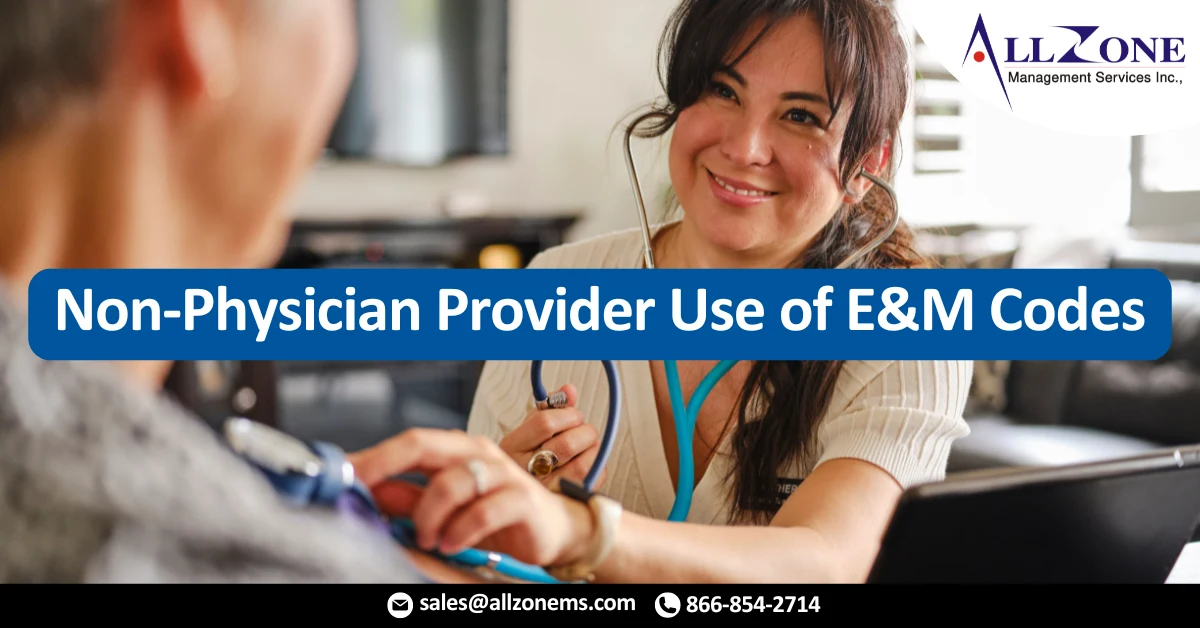Q: There seems to be a trend of practices using a variety of staff as ‘educators’ to provide patient education. The more recent ‘twist’ is the billing of E&M codes for non-physician providers, based in either clinical documentation or time-based, under the ‘incident to” provision – even though the physician does not see the patient for these visits. Is this ok? Who is allowed to do this?
A: There are circumstances where certain non-physician practitioners have access to the full range of EM office visit codes, and some cases access to certain codes. Those providers that have NPI numbers and are credentialed to bill Medicare or other payers can thereby bill directly in their own names and numbers the same as physicians do. CMS names PA’s, NP’s, clinical nurse specialists, nurse midwives and clinical psychologists as provider types that can bill under their own NPI.
These providers can also operate under ‘Incident-to’ guidelines and have their services billed under the name and NPI number of the physician, if they meet the Incident-to criteria, and subject to certain other limitations. The principal type of Incident-to be these provider types acting under physician supervision, and the billing is done as if the physician themselves personally provided the service.
A broader type of activity that also falls under the ‘Incident-to’ heading are those services performed by other employees of the group or entity, that are supervised either by the physician, or one of the non-physician providers above if they are billing directly.
This type of activity is defined in part as being: An integral part of the patient’s treatment course, commonly rendered without charge (included in the physician’s bills, of a type commonly furnished in a physician’s office or clinic (not in an institutional setting), and an expense to you (the physician or practice).
This was intended to cover common office activity: shots, dressings, miscellaneous supplies, instructions that a nurse would give on how to take your medicine.
This aspect of ‘Incident-to’ does not allow for MA’s, RN’s, surgical techs, and other employees with a vast array of certifications to provide education, coach, and otherwise instruct patients and essentially bill for this in the physician’s name using EM codes, with the possible exception of 99211.
The EM services are physician (and NPP) cognitive services to evaluate, manage and treat problems. An athletic trainer coaching a patient on rehab techniques and options, or a certified Sleep professional talking to a patient about their CPAP equipment is not a billable service under the physician’s name and number using a 99212 or a 99213, at least not for Medicare. They may have valuable certifications and specialty-specific knowledge, but they don’t have access to EM codes beyond 99211. If the idea is that they bill by time, time-based billing is limited to the physician/NPP face-to-face time with the patient.
99211 is commonly referred to as the nurse-visit code. And that is not entirely true either, there is a bit of physician work in there- but it doesn’t require the physician to personally do it.
Some certifications are allowed to bill some CPT’s, respiratory therapists can do smoking cessation counseling or nebulizer training. Dieticians have some codes just for them. And commercial payers could have any number of arrangements for specific services. But the creeping notion that the EM code levels can be used to represent the work of just about anyone with a certification that works for the doctor is a serious compliance concern.
For More Information: https://www.physicianspractice.com/physician-compensation/non-physician-provider-use-em-codes

